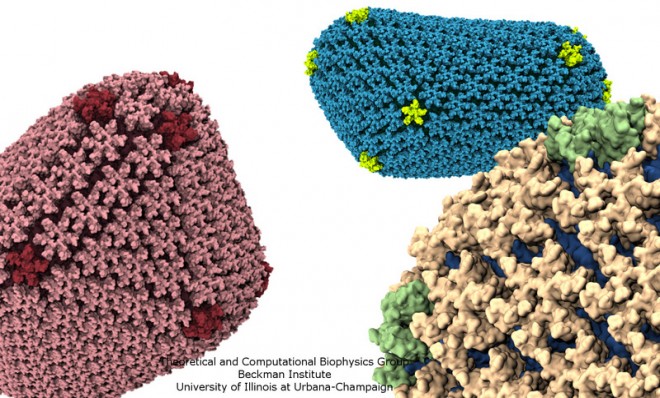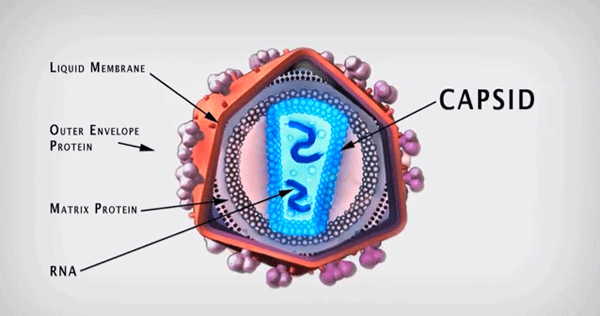How modeling HIV on an atomic level could lead to a cure
Researchers use a supercomputer to model the 64 million atoms at the heart of the destructive virus

Part of what makes the HIV virus so difficult to kill — aside from being thousands of times smaller than an average human cell — is that it's covered in several layers of protective proteins. Techniques are already being developed to attack the virus when it's at its weakest and most vulnerable. But new models — developed by scientists using the University of Illinois' "Blue Waters" supercomputer — are finally giving researchers an atomic-level look at the formidable barrier mechanism enclosing the heart of the virus.
If you peel away the outer layers of the HIV virus, you'll find a conical structure called the capsid, which houses the virus' payload of genetic material. (See the diagram below.) When HIV invades a cell, it's the capsid that opens up to initiate the takeover process, allowing the virus to replicate. Better understanding how this mysterious delivery system operates could be one of the final steps to finding a cure.

(Via YouTube)
The Week
Escape your echo chamber. Get the facts behind the news, plus analysis from multiple perspectives.

Sign up for The Week's Free Newsletters
From our morning news briefing to a weekly Good News Newsletter, get the best of The Week delivered directly to your inbox.
From our morning news briefing to a weekly Good News Newsletter, get the best of The Week delivered directly to your inbox.
But how the capsid opens is what has long eluded researchers, and understanding that process could help them develop a new class of HIV-disrupting drugs. "The timing of the opening of the capsid is essential for the degree of virulence of the virus," Klaus Schulten, a physicist that was part of the team that modeled the virus, said in a statement.
Schulten's team is the first to ever model all 64 million of the capsid's atoms — a painstakingly delicate process that would have been unthinkable until just a few years ago. According to Popular Science, Blue Waters, the massive computing system, which takes up hundreds of cabinets, can perform as many calculations in just one second as every human being on Earth can over a 1.5-day stretch.
The team of physicists and biologists ran countless simulations to discover that the capsid's infinitesimally tiny structure is composed of 216 hexagon-shaped proteins that fit together like a honeycomb with 12 previously unseen pentagons. According to Medical News Today, these pentagons are what give the capsid its sturdy casing — think a soccer ball — that can also open up to unleash its deadly genetic material once it has invaded a host cell.
Because this intricate delivery process has to happen with precise timing, the opening of the capsid is the perfect moment, says Schulten, to "throw a wrench into the system."
A free daily email with the biggest news stories of the day – and the best features from TheWeek.com
-
 Women carrying Christmas
Women carrying ChristmasTalking Point As the Christmas frenzy ramps up, many mums feel the pressure of ‘keeping the whole sleigh on the road’
-
 Is Keir Starmer being hoodwinked by China?
Is Keir Starmer being hoodwinked by China?Today's Big Question PM’s attempt to separate politics and security from trade and business is ‘naïve’
-
 A peek inside Europe’s luxury new sleeper bus
A peek inside Europe’s luxury new sleeper busThe Week Recommends Overnight service with stops across Switzerland and the Netherlands promises a comfortable no-fly adventure